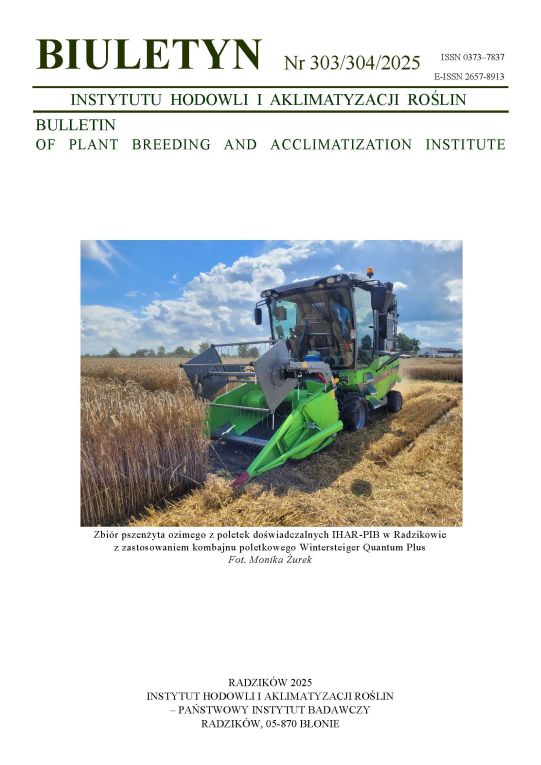Preliminary evaluation of fruit and shoot extracts of Actinidia arguta useing TLC profiling
Anna Kondej
a.kondej@ihar.edu.plInstytut Hodowli i Aklimatyzacji Roślin – Państwowy Instytut Badawczy (Poland)
Abstract
Fruits have been an integral part of the human diet for centuries. One very popular fruit that contains many nutrients and has a unique aromatic flavor is the kiwi fruit, or rather the Actinidia fruit. The Actinidia genus includes many species, some of which have been commercially available for a long time, while others are so-called "novelties" on the market. An example of such a species is Actinidia arguta (the so-called "mini kiwi"), which is distinguished by its smaller fruit size and the possibility of eating it with the skin on. The Actinidia arguta plant is one of the largest sources of many biologically active compounds that positively affect the human body; these include vitamin C, B vitamins and polyphenols (flavonoids and phenolic acids). To evaluate the chemical composition of the Actinidia arguta plant, the green parts of the plant and its fruits were examined by thin-layer chromatography methods. Chemical profiling was used to confirm the high content of phenolic compounds and naturally occurring sugars.
Keywords:
Actinidia arguta, Actinidia, chemical profiling polyphenols, thin-layer chromatographyReferences
Choma I. M., Nikolaichuk H., 2022, TLC bioprofiling – a tool for quality evaluation of medicinal plants w ,,Evidence-Based Validation of Herbal Medicine’’ wydanie drugie, edytor Pulok K. Mukherjee, wydawnictwo Elsevier, 16, 407-422
DOI: https://doi.org/10.1016/B978-0-323-85542-6.00014-7
Google Scholar
Latocha P., 2019, Aktinidia ostrolistna – wartościowy gatunek o dużych walorach ozdobnych i potencjale produkcyjnym, Rocznik Polskiego Towarzystwa Dendrologicznego, 67, 61-68
Google Scholar
Latocha P., Mini kiwi – towarowa produkcja owoców [dokument WWW]. Adres URL https://www.clematis.com.pl/informacje-o-roslinach/eksperci-radza/dr-hab-piotr-latocha/971-towarowa-produkcja-owocow/
Google Scholar
Ma T., Sun X., Zhao J., You Y., Lei Y., Gao G., Zhan J., 2017, Nutrient compositions and antioxidant capacity of kiwifruit (Actinidia) and their relationship with flesh color and commercial value, Food Chemistry, 218, 294-304
DOI: https://doi.org/10.1016/j.foodchem.2016.09.081
Google Scholar
Szeremeta D., 2019 , Skład chemiczny rośliny leczniczej Cistus incanus L. (czystek szary) a jej wybrane właściwości biologiczne, Praca doktorska Uniwersytet Śląski, 6-7
Google Scholar
Tan C., Wang Z., Feng X., Irfan M. & Changjiang L., 2021, Identification of bioactive compounds in leaves and fruits of Actinidia arguta accessions from northeastern China and assessment of their antioxidant activity with a radical-scavenging effect, Biotechnology & Biotechnological Equipment, 35, 594-607
DOI: https://doi.org/10.1080/13102818.2021.1908166
Google Scholar
Wojdyło A., Nowicka P., 2019, Anticholinergic effects of Actinidia arguta fruits and their polyphenol content determined by liquid chromatography-photodiode array detectorquadrupole/time of flight-mass spectrometry (LC-MS-PDA-Q/TOF), Food Chemistry, 271, 216-223
DOI: https://doi.org/10.1016/j.foodchem.2018.07.084
Google Scholar
Zhang J., Tian J., Gao N., Gong E. S., Xin G., Liu C., Si X., Sun X., Li B., 2021, Assessment of the phytochemical profile and antioxidant activities of eight kiwi berry (Actinidia arguta (Siebold & Zuccarini) Miquel) varieties in China, Food Science & Nutrition, 20, 5616-5618
DOI: https://doi.org/10.1002/fsn3.2525
Google Scholar
Authors
Anna Kondeja.kondej@ihar.edu.pl
Instytut Hodowli i Aklimatyzacji Roślin – Państwowy Instytut Badawczy Poland
Statistics
Abstract views: 425PDF downloads: 165
License
Copyright (c) 2024 Anna Kondej

This work is licensed under a Creative Commons Attribution-ShareAlike 4.0 International License.
Upon submitting the article, the Authors grant the Publisher a non-exclusive and free license to use the article for an indefinite period of time throughout the world in the following fields of use:
- Production and reproduction of copies of the article using a specific technique, including printing and digital technology.
- Placing on the market, lending or renting the original or copies of the article.
- Public performance, exhibition, display, reproduction, broadcasting and re-broadcasting, as well as making the article publicly available in such a way that everyone can access it at a place and time of their choice.
- Including the article in a collective work.
- Uploading an article in electronic form to electronic platforms or otherwise introducing an article in electronic form to the Internet or other network.
- Dissemination of the article in electronic form on the Internet or other network, in collective work as well as independently.
- Making the article available in an electronic version in such a way that everyone can access it at a place and time of their choice, in particular via the Internet.
Authors by sending a request for publication:
- They consent to the publication of the article in the journal,
- They agree to give the publication a DOI (Digital Object Identifier),
- They undertake to comply with the publishing house's code of ethics in accordance with the guidelines of the Committee on Publication Ethics (COPE), (http://ihar.edu.pl/biblioteka_i_wydawnictwa.php),
- They consent to the articles being made available in electronic form under the CC BY-SA 4.0 license, in open access,
- They agree to send article metadata to commercial and non-commercial journal indexing databases.














